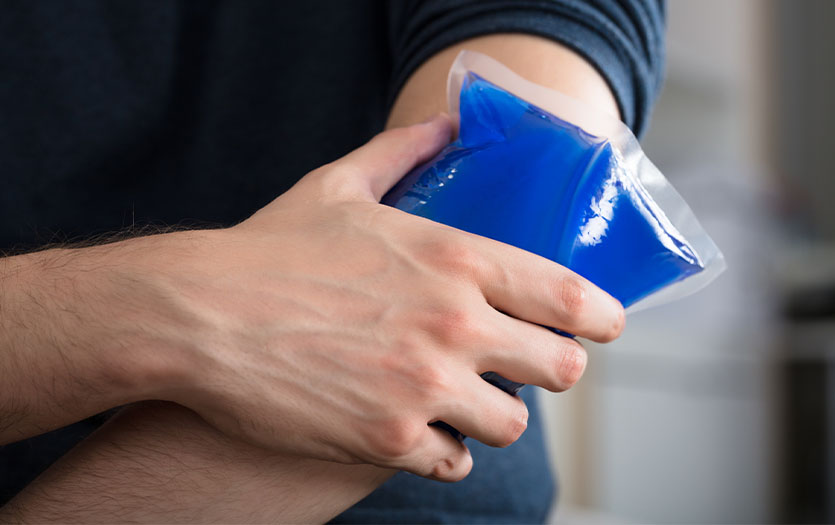
This post was written by Beth Herrell, athletic trainer lead, Parkview Sports Medicine.
We often hear the term, “pulled muscle” in regard to discomfort following activity or an awkward movement. In reality, those experiencing this sensation are referring to a strain in the muscle. In this post, we’ll discuss some causes and high-level treatment guidance.
How it happens
A strain can occur in the muscle or a tendon that connects the muscle to the bone. Muscles are like rubber bands, made up of thousands of strands of elastic spindles that can contract and relax, creating movement in the body. The tendon is fibrosis tissue that is like a rope that connects the muscle to the bone. A muscle strain usually occurs when an individual overstretches or overexerts the muscle or tendon.
Degrees of strain
The severity of a muscle strain is graded into three levels.
- Grade 1 strain occurs when an individual overstretches the muscle or tendon with little to no tearing of the muscle fibers.
- Grade 2 strain occurs when there is partial tearing of the muscle or tendon but not a complete rupture.
- Grade 3 strain would be a complete rupture of the muscle or tendon.
Grade 2 and grade 3 injuries typically result in discoloration and bruising, and can have a divot defect in the muscle or tendon that can be felt by hand. Complete ruptures of a tendon or muscle will typically present with a visible defect when the injury occurs.
Seeking medical attention
Grade 2 and 3 strains should be evaluated by a physician quickly to determine the severity of the injury and ensure treatment is provided in a proper timeframe. Injuries involving complete ruptures may require surgical intervention. Grade 1 injuries can often be treated with ice and therapeutic exercises, but if no progress is made within one week, it would be recommended to follow up with a physician.
Conservative treatment
The RICE technique is best for treating a muscle strain early.
RICE stands for:
Rest
Ice
Compression
Elevation
Ice can be applied to the injured area for 15-20 minutes immediately following an injury. If an individual has a cold sensitivity, they may need to decrease the time the ice pack is applied or ensure an adequate barrier is placed between the skin and ice pack. Ice can be used to help decrease pain, inflammation and swelling for the first 48-72 hours (about 3 days).
An elastic wrap can be used to apply light compression to the injured area to control swelling and inflammation. When applying an elastic wrap, the wrap should be applied by starting furthest away from the chest and ending closer to the chest.
Lastly, elevating the area can help to reduce the swelling.
Once the swelling is under control, gentle stretching can be performed in a pain-free range of motion. It’s important to make sure full range of motion has returned before beginning strengthening exercises. After strength has returned to normal without pain, an individual can start to gradually return to normal activity over 2-4 weeks. There is a high rate of reinjuries with muscle strains due to the muscles and tendons not being ready for full activity following an injury, so don’t rush!
Learn more about the services available through Parkview Sports Medicine by visiting us here.



